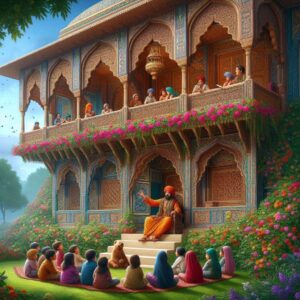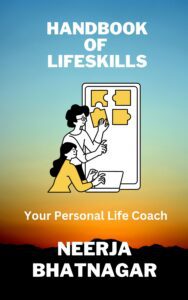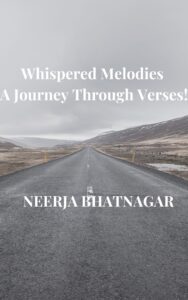 India has always been a land of oral traditions. Before books were printed or screens took over, tales travelled by word of mouth—from village courtyards to royal courts, from Sufi gatherings to temple mandapas. One such tradition, lesser-known yet powerfully evocative, is Qissagoi—the soulful art of storytelling that lived in the rhythms of the people.
India has always been a land of oral traditions. Before books were printed or screens took over, tales travelled by word of mouth—from village courtyards to royal courts, from Sufi gatherings to temple mandapas. One such tradition, lesser-known yet powerfully evocative, is Qissagoi—the soulful art of storytelling that lived in the rhythms of the people.
What is Qissagoi?
Qissagoi (from qissa, meaning story, and goi, meaning narration) is a folk tradition of oral storytelling rooted in Persian, Arabic, and Indian cultures. It became prominent in medieval India, especially in the Punjab, Awadh, and Delhi Sultanate regions. Qissagoi wasn’t theatrical like a play or poetic like a mushaira—it was conversational, rhythmic, and deeply emotional.
The qissago (storyteller) would gather people, often in informal settings like courtyards, chaupals, or sarais, and recite stories passed down for generations, often interwoven with local dialects and idioms.
How Is Qissagoi Different from Dastangoi?
While both Dastangoi and Qissagoi are oral storytelling forms with roots in Persian and Arabic traditions, there are key differences:
| Aspect | Dastangoi | Qissagoi |
|---|---|---|
| Meaning | Dastan = epic/tale, Goi = narration | Qissa = story, Goi = narration |
| Tone | Dramatic, elaborate, fantastical | Intimate, lyrical, emotional |
| Structure | Often serialised epics (like Dastan-e-Amir Hamza) | Shorter narratives, folk legends, love stories |
| Setting | Performed in royal courts, literary gatherings | Performed in public squares, villages, informal setups |
| Style | High Persianized Urdu, formal | Regional languages or Hindustani, accessible |
| Themes | Heroism, adventure, supernatural | Romance, tragedy, morality, spiritualism |
| Performance | Often performed by pairs or trained artists | Usually solo, with emphasis on voice and expression |
In short, Dastangoi was the art of narrating epics, while Qissagoi was the art of making stories personal. If Dastangoi was theatre, Qissagoi was a heartfelt mehfil.
Popular Qissas in Indian Tradition
Over the centuries, some tales became part of the Qissagoi canon, particularly in Punjab, Rajasthan, and Uttar Pradesh:
- Heer-Ranjha, Sassi-Punnu, Mirza-Sahiban – Tragic romances with strong socio-cultural commentary
- Qissa-e-Chuharmal – The tale of a Dalit hero in Bihar folklore
- Qissa Hatim Tai – Celebrated for generosity and mysticism
- Sufi Saints’ Lives – Stories of Bulleh Shah, Baba Farid, and others
- Folk Panchatantra Tales – Animal fables simplified and spoken to children and adults alike
Each qissa came alive through emotion, voice modulation, and cultural metaphor, with the storyteller becoming one with the story.
🎤 The Role of the Qissago (Storyteller)
A qissago was more than just a narrator—they were a custodian of culture and community memory. Their tools were:
- Memory, emotion, and rhythm
- Verses interspersed with prose
- Local references to make each story relatable
- Dramatic pauses and tonal shifts to capture attention
The performance was often spontaneous, with improvisation based on audience reaction, much like today’s stand-up or spoken word poetry.
Why Qissagoi Diminished
With the rise of printed books, cinema, and television, the need for oral storytelling shrank. Urbanization broke community circles. The digital age offered content but not connection. Qissagoi, with its human warmth, began to fade into memory.
The Revival of Qissagoi
In recent years, artists, heritage groups, and educators have started reviving Qissagoi:
- Storytelling festivals in Delhi, Pune, and Bengaluru
- Podcast-style digital storytelling in local languages
- Fusion events combining Qissagoi with music or visual art
- Heritage walks and college events invite local qissagos to perform
These efforts aim not only to preserve a fading tradition but to make it relevant in today’s context.
Why We Need Qissagoi Today
- It teaches us to listen, empathise, and imagine
- It fosters language diversity and cultural appreciation
- It reminds us of our shared humanity through stories
- It offers a slower, richer form of engagement in an age of scrolling
Qissagoi isn’t just about telling a tale—it’s about weaving emotions, history, and culture into a single thread that binds us. In every corner of India, a qissa still lives—waiting for a voice to tell it.
So let’s revive this art, one story at a time.
Become a qissago in your way—share a story with your child, a memory with a friend, a tale with your audience. The world will be better for it.
This post is powered by Blogchatter A2Z challenge.
Neerja Bhatnagar
Feel free to connect with me on social media to stay updated on more content like this!
Instagram | Facebook | YouTube |Twitter |Podcast |
I have written 3 solo books and 3 anthologies. You can buy my books on Amazon. If you are on Kindle Unlimited, you can read them for free. Pls, do check and share your reviews.



